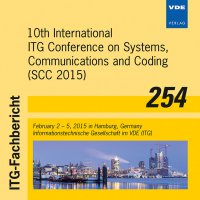Lloyd-Max Quantization of Correlated Processes: How to Obtain Gains by Receiver-Sided Time-Variant Codebooks
Conference: SCC 2015 - 10th International ITG Conference on Systems, Communications and Coding
02/02/2015 - 02/05/2015 at Hamburg, Germany
Proceedings: SCC 2015
Pages: 6Language: englishTyp: PDF
Personal VDE Members are entitled to a 10% discount on this title
Authors:
Han, Sai; Fingscheidt, Tim (Institute for Communications Technology, Technische Universität Braunschweig, Schleinitzstr. 22, 38106 Braunschweig, Germany)
Abstract:
Scalar non-uniform Lloyd-Max quantization (LMQ) is optimized for the minimum mean squared error satisfying the centroid condition, stating that the reconstruction level is the centroid of the area of the signal probability density function (PDF) in the respective quantization interval. For a given signal PDF, reconstruction levels are therefore time-invariant. Without predictive means at the encoder, scalar LMQ does not exploit source correlation at all. With the purpose of improving LMQ performance for correlated processes, we propose a novel scalar decoding approach employing a receiver-sided predictor inside a feedback loop. Based on the standard LMQ decision levels and utilizing the prediction error PDF shifted by the predictor output, a receiver-sided time-variant quantization codebook can be generated according to the centroid condition. Moreover, we give an analytical derivation of the variance of the prediction error. Simulations over an additive white Gaussian noise (AWGN) channel in error-free and error-prone transmission conditions show that the proposed approach outperforms the standard LMQ by about 1.0 dB in terms of signal-to-noise ratio (SNR), especially for low rate quantization and highly correlated source processes.


